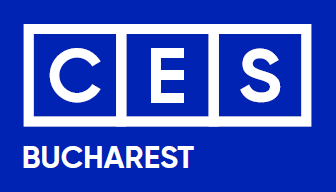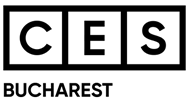Neobanks: the Future of Banking Started Yesterday. The First Romanian Neobank Creates New Market Territory
“The future starts today”, is the title of a successful TV series loved by Generation X. In banking, the future has already started with the progressive digitalization of financial services. After the crisis of 2007-2009, the first challenger banks appeared, providing digital services. Then the first neobank was registered in 2016. Now there are up to 307 neobanks and digital banks in the world, targeted for both business (Biz) and for teens (Teens), as stated by Neobanks app – and the list is expanding each day.
What are neobanks?
Neobanks are fully digital licensed financial institutions that offer banking services without having physical branches. They operate exclusively online and through mobile apps, using technology to provide more accessible, efficient, and often more affordable financial services than traditional banks. According to Fortune Business Insights, global neobanking market size was valued at USD 98.40 billion in 2023 and is projected to grow from USD 143.29 billion in 2024 to USD 3,406.47 billion by 2032.
Banking done differently
As technology advances, neobanks are constantly innovating and expanding into new markets. Consumer-wise, preferences change and neobanks are expected to offer increasingly personalized services. For the next years, forecasts predict a deeper integration of neobanks with other digital platforms and emerging technologies.
Neobanks are accessible – they allow users to manage their accounts, make transfers and access other financial services directly from their mobile phones or computers. Moreover, the process of opening an account is often simplified and quick, without the need to go to a branch. Another client advantage: due to the absence of physical branches, neobanks can reduce operational costs and offer lower fees or free services compared to traditional banks.
AI and Big Data at work
To deliver personalized solutions and improve user experiences, neobanks leverage advanced technologies like artificial intelligence and big data analytics. In terms of rates and fees, they are already recognized for their transparency, providing users with clear and easily accessible information.
While online banking offers flexibility, accessibility, low costs and innovation, it also presents certain challenges. The lack of physical interaction can be a drawback in some situations. Compared to traditional banks, the range of financial products available may be more limited. Additionally, security risks associated with hacking and online fraud are a constant concern – but this is a challenge common to traditional banking as well.
Salt Bank, the first Romanian neobank, makes steps ahead
Salt Bank, the first Romanian neobank, was launched in April 2024 and was perceived as the launch of the year on the Romanian banking market. In the first 10 days alone, Salt Bank attracted more than 100,000 customers. After its first 100 days on the market, Salt Bank marked a new milestone, of over 250,000 users.
“We aim to change the rules of the game in banking and financial services, offering users a significant jump forward in tech and banking experience, combining a bank’s financial stability with the agility of a fintech. This is why we continuously analyze consumers` behavior, their feedback and ideas from them, developing and improving constantly. We don’t aim to be perfect; we want to improve every day and provide customers with products and services tailored to their needs. This is the promise we made when we launched Salt: Banking. But as you want it”, said Gabriela Nistor, CEO of Salt Bank, at this celebratory moment.
Millenials, Gen Z and Gen X embracing neobanking in Romania. Alpha comes next
As stated by Salt Bank, the Romanian neobank`s clients are mainly people with medium and high social status, working in creative industries, healthcare, finance or public administration, coming from Romania’s big cities and in the 21-50 age group. Statistics provided by Salt Bank reveal a neobanking customer base spanning three generations: Millennials (born between 1981 and 1996), Generation Z (born between 1997 and 2012), and increasingly, Generation X, who are becoming more comfortable with and capable of using advanced technology.
Their most frequent transactions through Salt Bank in the first 100 days since the launch include mobility payments (for taxi or limousine services), followed by payments at restaurants and supermarkets.
Almost half of the clients come from Romania’s major cities, predominantly from Bucharest and Ilfov, Cluj, Iasi, Brasov, Timisoara and Constanta. Two-thirds of the clients are men, primarily using Salt Bank for their everyday banking transactions („daily banking”).
According to estimates, there is no doubt that the number of neobank users will significantly expand when the Alpha generation (born after 2012) will come to need a bank account. As a consequence, the number of neobanking users worldwide is expected to exceed 386 million by 2028.







